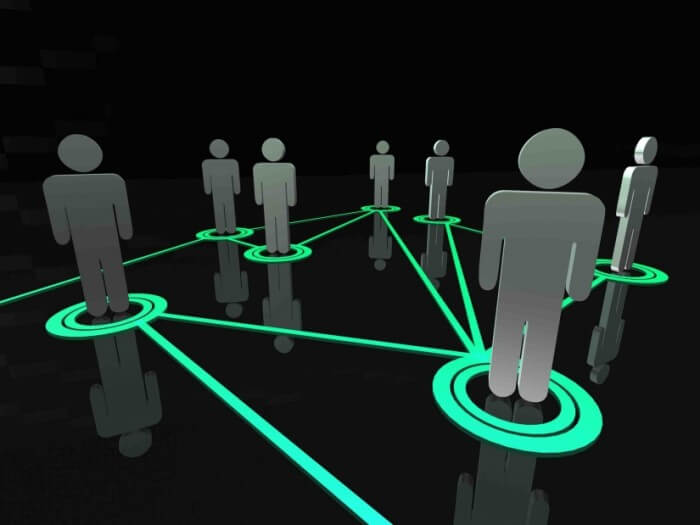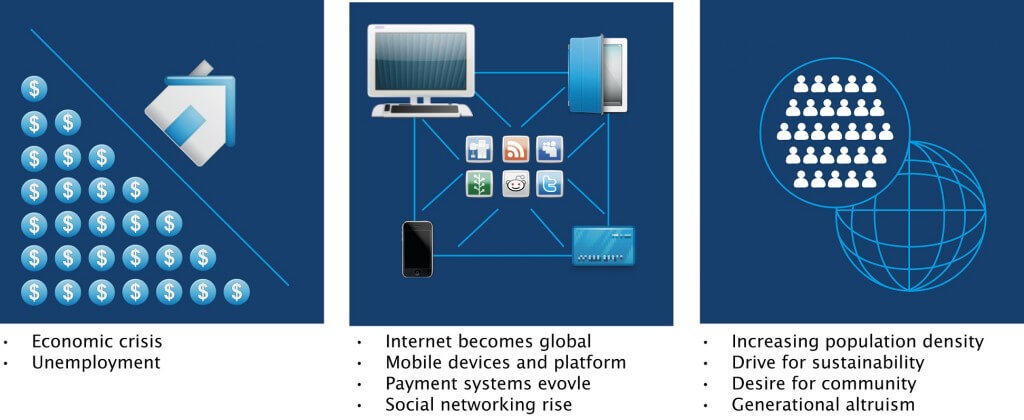I don’t need a drill. I need a hole
The past few years have witnessed the rise of what’s called collaborative economy which implies sharing of physical, virtual and intellectual goods. The new model of consumer relationship emerges at the intersection of online social networking, mobile technology and the social movement that comes as a response to the reduction in purchasing power.
The rise of the share economy
From social lending, peer-to-peer hotels, peer-to-peer task, bike sharing and car sharing, the rise of the share economy is reinventing not just what we consume but how we consume.
The new game-changing movement started to gain momentum as a response to the global financial crisis and an attempt to fight over consumption. Money shortage drove people to the idea that things could be owned collectively, allowing lenders to gain and borrowers to save more money.
This also revived the once forgotten feeling of a big family, reuniting consumers on a personal basis and letting them feel like a member of a huge, national or even international community.
We had all that many centuries ago when were living in villages and shared essentials. The history makes a spin – now driving sharing on a whole new level, enhanced with technology and a much wider selection of goods to offer.
The rise of the collaborative economy is driven and enabled by the market forces that are converging now. As these trends accelerate, so too will the collaborative economy. The drivers behind the rise of the sharing economy:
#1 – Collaborative economy driver – Societal
- Increasing population density
- Drive for sustainability – Environmental concern for diminishing global resources with peer-to-peer sharing as a way to directly reduce global landfill
- Desire for community
- Generational altruism – The need to share, to feel connected – giving and receiving as part of a mutually beneficial community
#2 – Collaborative economy driver – Economic
- Monetize excess or idle inventory
- Increase financial flexibility
- Access over ownership
#3 – Collaborative economy driver – Technology
- Social networking – Social profiles and reputations tracking
- Mobile devices and platforms – Access to people or other resources requires “portability” for a majority of these services, so mobile platforms and devices for transfer of information become necessary
The new sharing economy
Whatever your opinion is on the drivers behind the rise of collaborative consumption and where it heading, one thing is clear: it is here to stay.
The sharing economy represents the new age of consumerism, as consumers no longer want everything to be mass produced. Instead, they are open to sharing and trusting in strangers to provide services in the same way a company would.
However you embrace the sharing economy be aware that this is a fast-changing business landscape. New models emerge every day, many of them around resources and assets that may at first seem unlikely candidates.
Short URL & title:
The drivers behind the rise of the collaborative economy — http://www.torbenrick.eu/t/r/rab
Share it:
If you enjoyed this article, please take 5 seconds to share it on your social network. Thanks!










Interesting stuff. Any thoughts on what impact the collaborative economy may have on traditional management consulting firms?